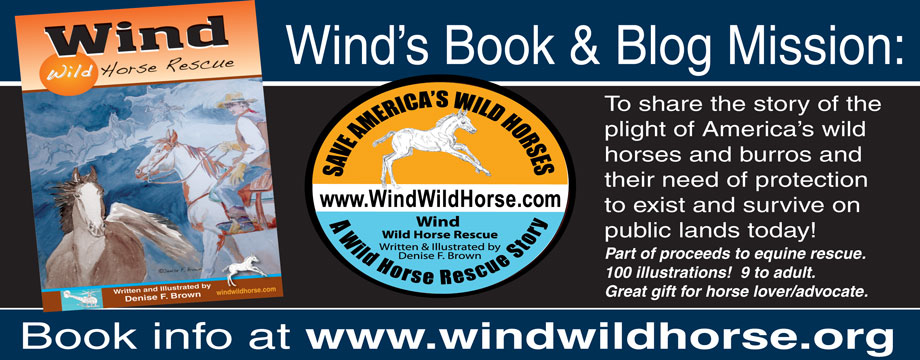The moral and ethical issues of animal abuse is in the ranks of child abuse, domestic violence, drug abuse and other abuses. It’s just another segment of mankind’s crimes and addictions that never seem to get solved.
I wrote this book because I love horses and I love to draw and paint horses and animals. I never intended to become an animal activist, but as I researched the story of the horse, I realized how naive I have been all my life about inhumane treatment of many horses today and throughout history. So I have decided to go ‘down the rabbit hole’ to uncover more.
I compare the horse’s story to unraveling a golf ball — a beautiful and shiny, perfectly formed exterior, covered with beautiful glossy white or colorful paint, branded with someone’s professional logo and packaged in an attractive box, for sale in a pro golf shop or retail store. But, if you have ever broken one open…it is full of sticky, gummy and sinuous cords on the inside, and just a big mess of goo and stuff you don’t want to touch.
As with any controversial story, there are always two sides of the fence to stand. On one side is a humanitarian, an animal lover, with a voice that pulls at your heartstrings and makes you want to rescue something. The other side is a person that often has financial gains, with a history of a specific way of treating an animal through past generations, maybe due to part ignorance, some greed, a lack of caring, or just plain thinking that it is the way it is, always has been, and nothing can be done about it.
This mades me start to wonder about the whole end of life process of horses.
If you can’t stomach what is the following information, then don’t keep reading. It might haunt you forever.
I grew up next to 4 horse farms, rode horses, took riding lessons, but never got the chance to own a horse. I just assumed when your horse got old and died, you got a backhoe to carry the horse down the field, dug a big hole and buried the animal. That was 40-50 years ago, when you could get away with it in most places. Now, some state laws say no to burials and that it will pollute the water supply if too close to certain areas. Some states still allow burial on your property…so, you need to hire a backhoe. If you don’t have a pet cemetery, then there is the expensive cremation option and transportation costs. So, just what do people do with their deceased pets, race horses, zoo animals, farm animals, rodeo livestock? Hire someone with a van to remove them? After roundups, if a horse is injured, they are put down and dispose of them in the desert and cover the carcass up with dirt. Anywhere else, you can call a ‘rendering’ company to take the body away, where they actually process the carcass into glue.
My worst discovery, is if an animal has to be put down or is unwanted or not adoptable, the other alternative is the slaughterhouse. In the US, horse slaughter is illegal, but not in Canada or Mexico. So you can guess what happens to the unwanted horses. They are crammed into tight trailers, trucked for hours across the borders, killed, processed, and the horse meat is shipped to Europe and Asia (France, Belgium and Japan) for human consumption. Well, that was quite shocking to me as an animal lover. I had heard of slaughter houses, but I thought those days were gone. WWII was short on cattle meat when the war and economy forced ranches out of business, so the soldiers were fed horse meat. Some countries in the world still eat horse meat. Recently an organization made up of ‘horse experts’ on the horse industry met at a convention in Las Vegas, Nevada. They are in the pro slaughter industry and they make big dollars from it. Which makes me wonder if the underlying motivation to capture wild horses has too strong a tie to the slaughter business in disguise. This has easily become a business of harvesting wild horses, storing them in pens for years until they reach 10 years old, are not adoptable or injured, and then selling or auctioning them off to end up in the slaughterhouses, making huge profits. 50,000-100,000 horses a year is the current average registered number of horses taken to slaughter. Their side of the fence says it is a needed business because of too many unwanted horses in this country and promote itself as conducting the most humane treatment of these animals until their death.
As usual, many things that relates to mankind’s choices end up to be about money and politics. When it comes down to the decisions, whoever has the biggest purse strings and connections often wins for a while. Except when public outcry and grassroots politics speak up and report whatever abuse cases are found in attempts to prevent more cases. It is difficult to enforce, so there will always be trafficking in money making ventures that keep our jails, court systems and lawyers very busy.
Does the average citizen know or understand or care about any of the horse’s end of life stages? Most likely not, unless a 5 minute broadcast on the evening news tells a flashy story about a case of abuse. Most people that are involved in horse or animal rescue say that some of the cases haunt them forever. They will do whatever they can to help and protect or find help for the animal in need.
More rescue locations and facilities keep opening across the country. Legislation is pending for more humane solutions to the the horse problems. Public awareness and publicity can lead to more adoptions.
If you too choose to go ‘down the rabbit hole’ to find out more, and how can you help, order the book at http://www.windwildhorse.com


